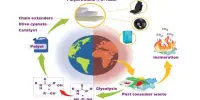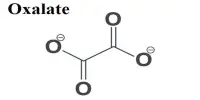Photosynthesis is the process of converting chemical compounds into food by using sunlight. The majority of the chemical energy that flows through the biosphere is provided by photosynthesizing organisms. They also produced the majority of the biomass that resulted in the fossil fuels that power much of today’s world. Photosynthesis occurs on land, at sea, and in freshwater environments. Over 3.5 billion years ago, the first photosynthesizing single-celled bacteria evolved. The subsequent rise in atmospheric oxygen about a billion years later shaped the evolution of life on Earth over the last 2.5 billion years.
Resurrecting billions of years-old enzymes reveals how photosynthesis adapted to increased oxygen levels. Rubisco, the central biocatalyst in photosynthesis, is the most abundant enzyme on the planet. A team of Max Planck researchers has deciphered one of the key adaptations of early photosynthesis by reconstructing billion-year-old enzymes. Their findings not only shed light on the evolution of modern photosynthesis, but also provide new ideas for how to improve it.
Today’s life is entirely dependent on photosynthetic organisms such as plants and algae that capture and convert CO2. At the heart of these processes is an enzyme called Rubisco, which captures over 400 billion tons of CO2 per year. Rubisco is produced by living organisms in staggering quantities: the mass of Rubisco on our planet exceeds that of all humans combined. Rubisco had to constantly adapt to changing environmental conditions in order to play such a dominant role in the global carbon cycle.
Using a combination of computational and synthetic approaches, a team from the Max Planck Institute for Terrestrial Microbiology in Marburg, Germany, in collaboration with the University of Singapore has now successfully resurrected and studied billion-year-old enzymes in the lab. In this process, which they describe as “molecular paleontology,” the researchers found that instead of direct mutations in the active center, an entirely new component prepared photosynthesis to adapt to rising oxygen levels.
We anticipated that the new component would directly exclude oxygen from the Rubisco catalytic center. That was not the case. Instead, the new subunit appears to act as a regulator of evolution: its recruitment altered the effect of subsequent mutations on Rubisco’s catalytic subunit.
Luca Schulz
Rubisco’s early confusion
Rubisco is ancient: it emerged approximately four billion years ago in primordial metabolism prior to the presence of oxygen on earth. However, with the invention of oxygen-producing photosynthesis and rise of oxygen in the atmosphere, the enzyme started catalyzing an undesired reaction, in which it mistakes O2 for CO2 and produces metabolites that are toxic to the cell. This confused substrate scope still scars Rubiscos to date and limits photosynthetic efficiency. Even though Rubiscos that evolved in oxygen-containing environments became more specific for CO2 over time, none of them could get completely rid of the oxygen capturing reaction.
The molecular determinants of increased CO2 specificity in Rubisco remain largely unknown. However, they are of great interest to researchers aiming to improve photosynthesis. Interestingly, those Rubiscos that show increased CO2 specificity recruited a novel protein component of unknown function. This component was suspected to be involved in increasing CO2 specificity, however, the true reason for its emergence remained difficult to determine because it already evolved billions of years ago.

Studying evolution by resurrecting ancient proteins in the lab
To better understand this pivotal moment in the evolution of more specific Rubiscos, researchers from the Max Planck Institute for Terrestrial Microbiology in Marburg and Nanyang Technological University in Singapore used a statistical algorithm to recreate Rubisco forms that existed billions of years ago, before oxygen levels began to rise. Max Planck researchers Tobias Erb and Georg Hochberg led the team that resurrected these ancient proteins in the lab to study their properties. The scientists were particularly interested in whether Rubisco’s new component had anything to do with the evolution of higher specificity.
As doctoral researcher Luca Schulz explains, the answer was unexpected: “We anticipated that the new component would directly exclude oxygen from the Rubisco catalytic center. That was not the case. Instead, the new subunit appears to act as a regulator of evolution: its recruitment altered the effect of subsequent mutations on Rubisco’s catalytic subunit. When this new component was present, previously insignificant mutations had a huge effect on specificity. The presence of this new subunit appears to have completely altered Rubisco’s evolutionary potential.”
An enzyme’s addiction to its new subunit
This function as a “evolutionary modulator” explains another puzzling aspect of the new protein component: Rubiscos that incorporate it are completely reliant on it, despite the fact that other forms of Rubisco can function perfectly well without it. The same modulating effect explains why Rubisco becomes tolerant to mutations that would otherwise be catastrophically detrimental when bound to this small protein component. Rubisco became addicted to its new subunit as a result of the accumulation of such mutations.
Overall, the findings finally explain why Rubisco kept this new protein component around since it was discovered. Georg Hochberg, Head of the Max Planck Research Group, explains: “The fact that this link was unknown until now emphasizes the importance of evolutionary analysis in understanding the biochemistry that drives life. The evolution of biomolecules like Rubisco can reveal a great deal about why they are the way they are today. And there are still a plethora of biochemical phenomena whose evolutionary history we are completely unaware of. As a result, it’s an exciting time to be an evolutionary biochemist: nearly the entire molecular history of the cell is still unknown.”
















